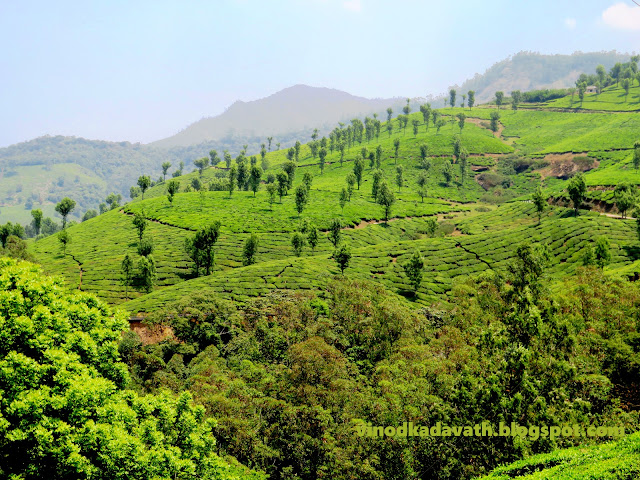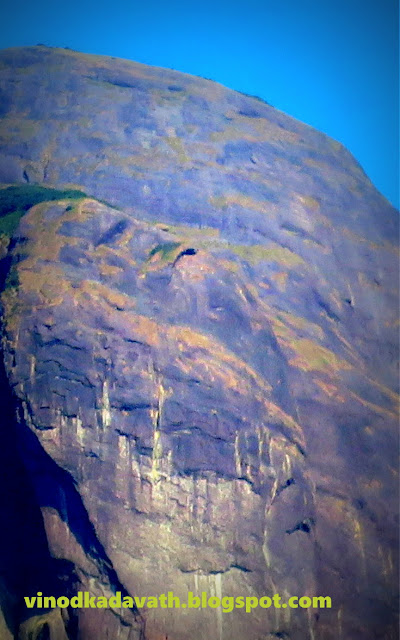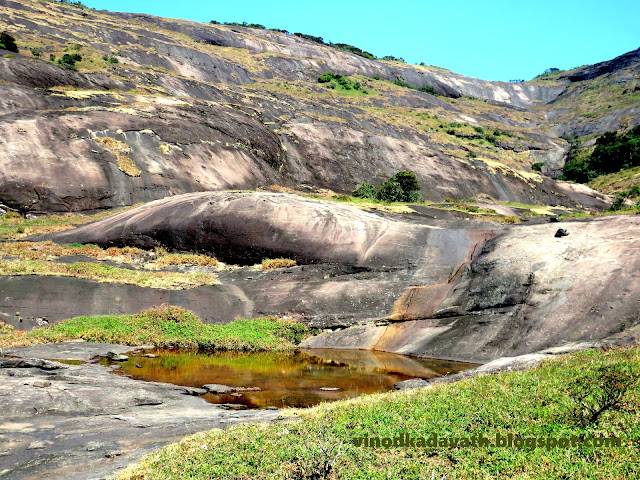No matter how many times you have visited Munnar, you may never discover it enough. A vista of how Munnar was this season was the blue Jacaranda flowering at its crazy best. This is what I love about repeated visits to Munnar, it is new everytime!
This time I got an opportunity for sightseeing by bus in quite a different way and enjoy a unique ride through the tea-carpeted hills. Munnar KSTRC has come up with a special package that will take you on a budget-free tour from Munnar to Kanthalloor. Kanthalloor is located 57km from Munnar. The costs for one day journey is Rs 300. The bus carrying tourists starts at 9.30 am from Munnar KSRTC old depot and had one hour halt in each stop.
The first stop in our chart was Tata Tea Museum which is located at 2 km from the centre of Munnar. Entry fee is Rs.125 per head. It is a part of the Nallathanni Estate of Tata Tea. A 30 minute documentary feature by the museum will give you the opportunity to watch the transition from the rudimentary tea roller to the modern fully automated tea factory.
Next stop was at Estate photo point. Surrounded by the Tata Tea gardens of the Kanan Devan Hills and a string of silver oak trees with the backdrop of the vast expanse of the Sahyadri ranges, this is the perfect spot to relish the beauty of Munnar
There is a small road side tea stall selling tea and snacks. We had tea and proceeded to Marayoor. Twists in the road reveal vistas so vast and breathtaking that they’re distracting.
Further the road goes on through Marayoor natural sandal reserve. The forest department has rightly put high fence to prevent illegal activities. We could see the sandal trees on either side of the road.
The Jacaranda trees are in full bloom in this stretch just before reaching Lakkom falls. Local people call it ‘Neelavaka’. Jacaranda indicates spring season. British brought Jacaranda to Munnar during colonization to beautify the hills and estate bungalows. It is one of the 49 species of flowering plants in the family of Bignoniaceae, and is native to South America.
Next stop was at Lakkom waterfalls. Entry fee is Rs.50 per head. The waterfall is close to the main road. You have to climb few steps to reach the falls from the main road. Originating from the Eravikulam National Park, the stream cascade down from the rocky cliffs. Further we walked down through the road and then through tea estate to reach the natural pool. I walked along the paths between the carpet of green.
There are a whole lot of plants and shrubs around the pool that add to the scenic view. A dip in the cold yet refreshing water is all you need on a hot summer's day.
A pretty drive through the sandalwood forests will take you to the sugarcane blossoming village. When you hear Marayoor, Marayoor jaggery and Marayoor sandalwood come to mind. As the name suggests, there are many jaggery making centers in Marayoor. Farmers are benefitted by making significant changes in the production of Marayoor Jaggery with the availability of Geo-Index status. As result, black-colored jaggery is now in high demand in the market.
Most of these factories are largely without mechanization or infrastructure and these production units are still man-made. Now 12 months full mature sugarcane is used for the production of Marayoor Jaggery. The juice obtained from the crushing of sugarcane is transferred to a large iron vessel through a tube, which is then boiled over a fire and reduced to a paste-like jaggery. The product here is this rolled jaggery. It is sold in many places in Marayoor.
Most of the people who work here are attached to these grass-fed jaggery units for accommodation, cooking and caring for children.
Muniyara's are famous in Marayoor. Tourists often visit the munirs at Anakottupara. We use Stone Age culture to describe the way of life of human beings a thousand or two thousand years before the year of Christ. The muniyara's were the burial chambers of the time. The muniyara's look like two layers of rock steep and another layer of rock fixed on top of it. Some say that the 'soul' resided in muniyara's after death. Those remains are still intact in Marayoor. The muniyara's will help us to go back in time to history.
Finally we reached our last place in our chart - Kanthalloor. Kanthalloor is situated on the eastern side of the Western Ghats on the border of Kerala and Tamil Nadu, between Munnar and Udamalpet. It is at an altitude of about 5000 feet above sea level. This is favourable for the natural farming of many fruits like apple, blackberry, orange, plums, strawberry, passion fruit, etc. and vegetables like Cauliflower, carrot, potato, garlic, cabbage, beans etc.are grown in plenty. We visited one of the private farm. The best season to visit Kanthalloor is from August to October. Because of the off season there was not much fruits and vegetables. There isn’t much to do here, but that’s part of the charm.
As we made our way back to Munnar, we passed through Nachivayal, Kovilkadavu. Not only do you get to cruise through a sandal forest reserve but, more often than not, you will spot a herd of deer.
From 6 pm onwards, the mist would be my constant companion through the ride. It was already dark when we reached Munnar at around 7 pm. By that time the chill in the air had picked up.





































